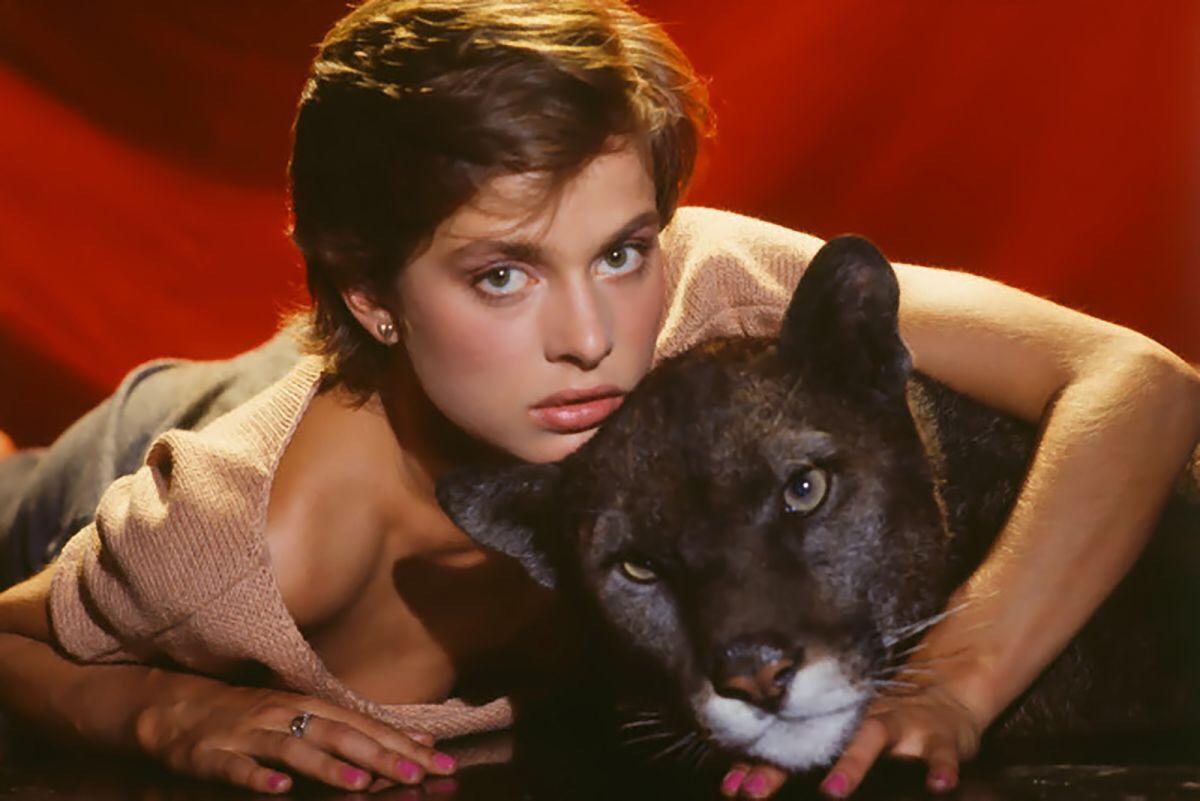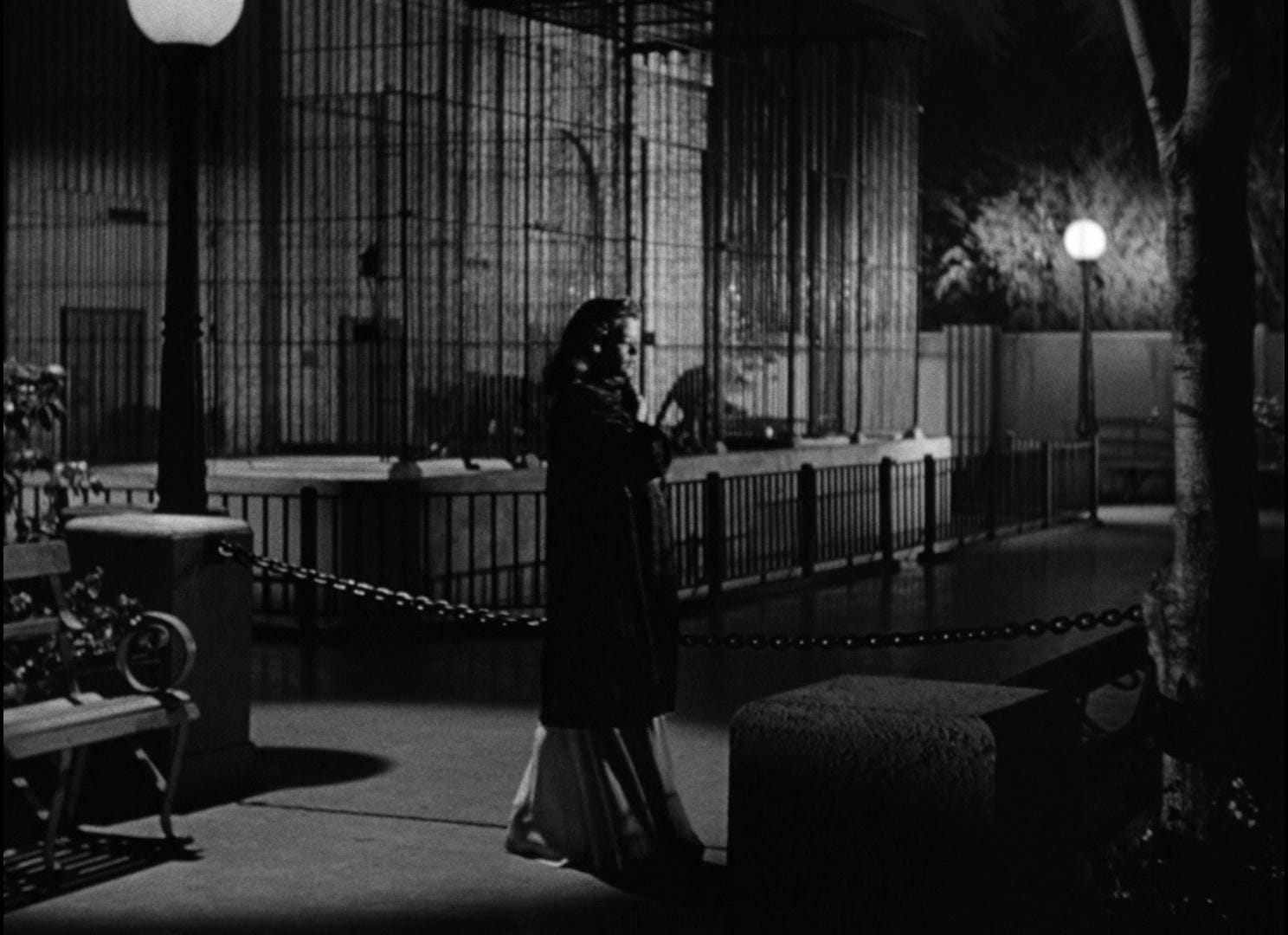As the Inquirer’s resident body horror correspondent (a title I’m bestowing upon myself), it felt natural that I should be the one to review Paul Schrader’s 1982 Cat People as one of my contributions to the slate of reviews we have covering Static Vision’s Metamorphoses festival. The fact that it was screening in a double feature with the 1942 original cemented my decision to grab the review tickets that had (very generously) been offered to us.
To be honest, I knew virtually nothing about either film going in. I was aware of the 1982 Cat People because it was directed by Schrader, a man I’m becoming increasingly obsessed with, and featured a classic David Bowie tune as its theme song, but beyond that all I had to go on was the basic plot of people turning into cats, an IMDb trivia anecdote about an affair between Schrader and star Nastassja Kinski and the use of the term ‘body horror’ in its description on the Metamorphoses website. I knew even less about the original, and my distinct lack of knowledge on either film actually made me rather excited. For once, I was going into a movie (or two, I guess) without knowing what to expect, ready to be surprised and shocked.
Watching both together on Thursday night at the opening of Metamorphoses, was actually a pretty special experience. The connections and differences between the two films are really fascinating. I highly recommend watching them together; it’s an entertaining double feature at the very least, but at best you get to consider the nature of cinematic remakes, explore how film language translates across different forms and compare two fundamentally different approaches to horror filmmaking.
I’ll begin by talking about the 1942 original.
The film that Jacques Tourneur was able to craft, even with the limitations of cinema 80 years ago (both technological and cultural, the Hays Code still very much in practice), is nothing short of simply stunning.
The pitch line is this: Irena Dubrovna (Simone Simon), a Serbian woman living in New York, falls in love with a man named Oliver Reed (Kent Smith) but fears becoming intimate with him as, according to an urban legend, the inhabitants of the village she grew up in are cursed to become cats upon becoming aroused. It’s a fairly simple plot, laden with classic horror movie tropes (people turning into animals, witches’ curses, doomed love), but the end result is divine, a tense and thrilling piece of early horror which elevates itself above the schlocky Wolf Man rip-off the studio produced it as to become an intellectual and interesting exploration of the nature of fear, desire and sexuality.
The swimming pool scene in particular demonstrates precisely what there is to love about this film. Alice (Jane Randolph), the other woman vying for Oliver Reed’s affection, is finishing up a swim at the local pool when all of a sudden she sees a shadowy figure in the exit. With nowhere to escape, she dives back into the pool as, all around her, shadows move along the walls and cat snarls mount tension and fear. Finally, the lights turn on only to reveal Irena standing at the edge of the pool, danger seemingly averted (at least for now). Alice’s robe, however, has been mysteriously shredded…
The scene is shockingly tense for something filmed and conceived 80 years ago. Formally, a stunning piece of horror filmmaking, but what I’m interested in is the way that it illuminates the thematic interests of the entire film. Cat People is primarily about the fear of intimacy, of giving yourself over to someone to be completely theirs, and of letting go of yourself. The pool scene brings the literal monster to Alice as a representation of the danger which her love for Oliver entails, but Irena’s role in the scene is also fascinating to me.
Irena is both the emotional heart and the monstrous villain of the film, the earliest horror feature I’ve seen which puts a woman at its centre, and I’ll be damned if this doesn’t open the film up to wondrous possibilities in terms of feminist and queer readings. Why does Irena turn into a cat in the swimming pool? Oliver isn’t there, the creep psychiatrist Dr Judd isn’t there and I thought she only turned into a cat when she’s aroused? Well, Alice is there and Irena is clearly a lesbian so actually this makes perfect sense. She’s clearly a lesbian, guys, come on it’s so obvious! It’s a movie about forbidden sexuality and shrinking away from intimacy, Irena’s curse is so easy to read as a stand-in for lesbianism I’m frankly shocked there are people who see this movie and DON’T walk away thinking that (obviously I’m far from the first person to make this connection). Even ignoring the (very obvious) queer reading, the film also deals explicitly in female sexuality and the way that patriarchal societies seek to control and even pathologise it. Dr Judd is a fascinating character who represents the (at time) growing influence of psychoanalysis as a means of ‘fixing’ women and his lecherous advances upon Irena only serve to paint pathologising treatments such as this as tools of patriarchal oppression (SPOILER#hence why he must die at the hands, or paws, of her in cat form#SPOILER).
There’s so much to explore in this film, it’s really something to behold. For a film as old as this to be so dense and layered with meaning and open to so many facets of interpretation, it can only be held up as an example of horror as high art and the myriad possibilities of the genre.
I loved it.

Which brings me to Paul Schrader’s 1982… remake? That feels wrong actually, maybe we’ll just say that Schrader takes “inspiration” from the original and, instead, makes the 1980s cocaine-fuelled excess version featuring sex, violence and a Giorgio Moroder (my King, my God, etc.) synth score for the ages.
This time, Irena Gallier (Nastassja Kinski) arrives in New Orleans (travelling from Canada) to meet her estranged brother Paul (Malcolm McDowell). From there, the plot goes completely off the rails. Irena falls in love with Oliver (John Yates), a zoo curator who had captured Paul (in cat form), and her sexual awakening results in the revelation that her and Paul are cat people who, like the original, turn into cats when they’re aroused, but this time must kill to turn back. Oh, and also the cat people are an incestuous family who can only have sex with each other without turning into cats, so the reason Paul wanted to meet Irena so bad is because he wanted to fuck her. Paul Schrader was on a lot of drugs guys, give him a break.
I was really disappointed by this one, but that’s not to say it’s a complete failure. Schrader is an excellent director so, of course, this film looks fantastic and the performances are pretty immaculate (Malcolm McDowell in particular is really going for it). I think the horniness of the film sort of works against it, but there was definitely potential there for an in-depth exploration of the more sexual aspects of the original, without the restrictions of the Hays Code holding back sexually explicit content. Schrader seems uninterested in exploring the themes of feminine sexuality present in the original though, so the explicit sexuality in this one comes off as leering, at best. Furthermore, it is interesting how Paul and later Irena embrace their status as cat people and own their animal sexuality, but again I think this is marred by just how horny this damn film is. Finally, and how could I possibly omit this, the special effects are fantastic. The gore is used to great effect and the cat person transformation scene I was waiting for the entire film was, in fact, excellent and well worth the wait (yes, I’m an absolute sucker for body horror, but this aspect really was one of the strongest parts!).
My praise ends there, however, as most of what I loved about the original gets stripped away, leaving a half-formed shell which hints towards greatness but ultimately falls pretty flat. There’s very little ambiguity here, very little tension, the things which made the original so great and so thematically rich just getting absolutely gutted in favour of horniness and excess. I think the connection to the original is really what kills the film, almost as if it would work much better if they had just completely severed all ties and made an original film themselves (I mean, the plot is so different it’s bizarre that this isn’t the case). Instead, what we’re left with are very superficial connections which don’t seem to understand what makes the original work but insist that you recall it and keep it in your mind as you’re watching this version.
Once again, I return to the swimming pool scene to demonstrate. The scene appears again in the 1982 version, this time in colour. The tension of the original is lost, as is the visually stunning image of the cat’s shadow slinking along the pool walls, replaced with a shift in the colour of the lights. But the formal differences aren’t what bugs me. Instead, it’s the fact that this scene was included at all. The affair angle is cut in this film. Alice (Annette O’Toole) isn’t having an affair with Oliver at this point, so why does this scene happen? It doesn’t make any sense for Irena to want to kill Alice, and she’s also very straight in this one (a queer reading simply cannot hold up against the amount of times we see Irena have sex with men) which rules out the possibility that she wants to fuck Alice, so why is this scene here if it isn’t justified by any aspect of the plot or characterisation? Well, because it’s an iconic and really cool scene in the original so wouldn’t it be cool if we did it again! Genuinely, I cannot see any justification for this scene’s presence beyond the fact that it happens in the first one and this really illustrates my issue with the “remake” aspects of this one.
Every aspect borrowed from the original is entirely superficial, to the point where they actively hinder the film because everything borrowed feels out of place, unjustified and actively confuses elements introduced in the 1982 film. It really is very annoying, as cutting most of these aspects would have resulted in the Schrader version being a much more fully formed final product, and the ghosts of Jacques Tourneur’s vision wouldn’t be lingering throughout the film and getting in the way of the things Schrader is trying to say (not that I think Schrader is trying to say anything particularly interesting but maybe a clearer realisation of his vision would have helped that).
All in all, comparing the two, I can only arrive at the conclusion that the 1942 Cat People is vastly superior to the 1982 Cat People in almost every respect, other than a number of David Bowie bangers playing over the end credits.
Cat People (1982) can currently be rented in Australia through a variety of services viewable here. Cat People (1942) can currently be watched in a stretched aspect ratio at the Internet Archive here, or in better quality using ‘alternative distribution methods’.

